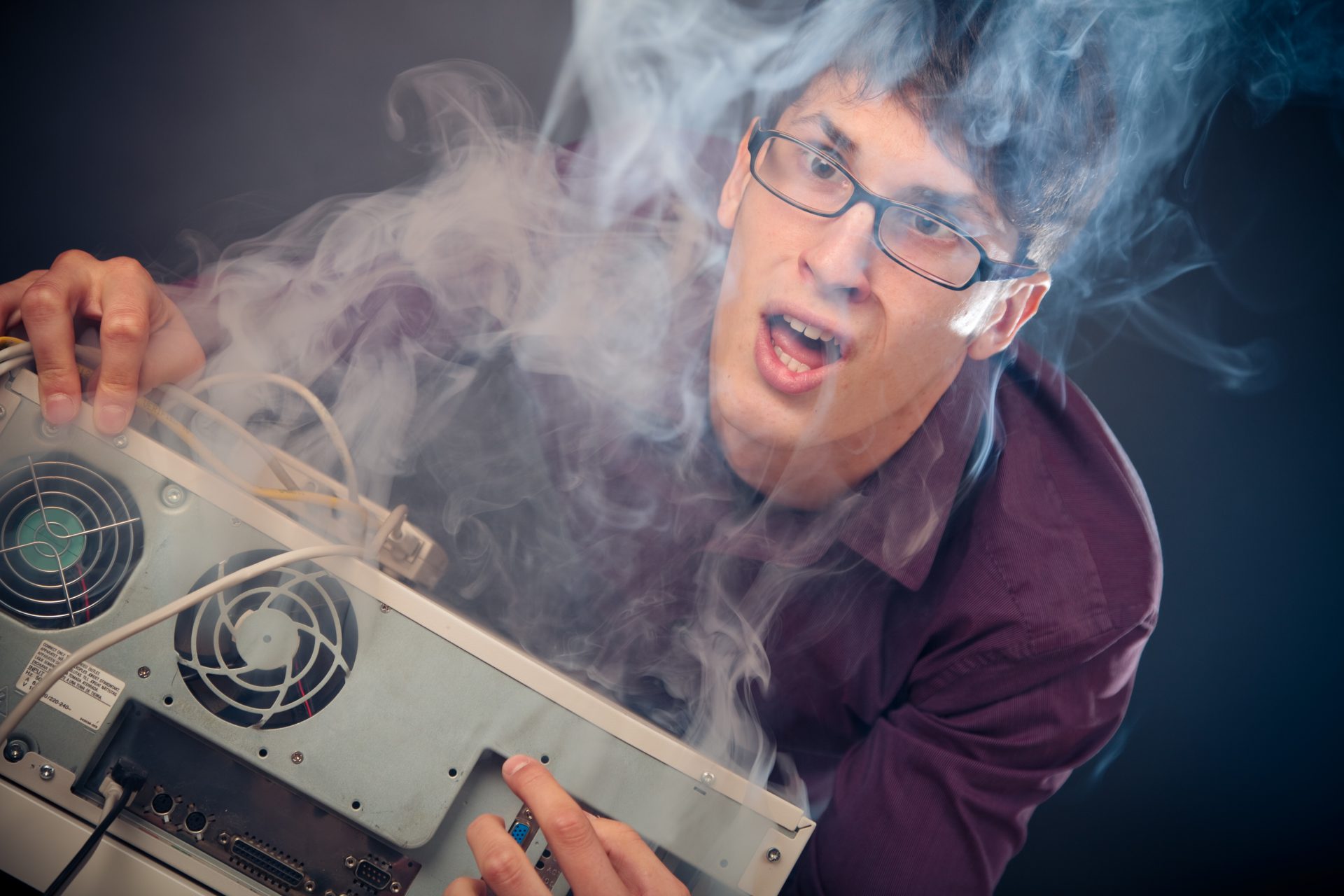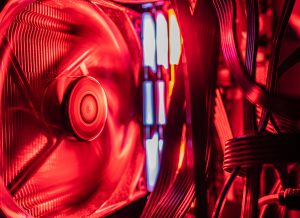Computer Overheating: Everything You Need to Know

Computers, like many electronics, get warm or even hot when you use them. Knowing when your computer is too hot is essential. Knowing what to do when your computer is overheating isn’t always obvious. All computers have built-in cooling systems to keep them from overheating. Fans are standard for cooling, and, they usually do the trick. Some machines, almost always gaming computers, come with water-cooling systems.
Signs Your Computer is Overheating
Knowing the signs of your computer overheating is also important. Often when the computer is too hot, or the fan is struggling to keep up, you’ll be able to hear it. The fan will start working harder to cool the processor; this gets noisy quickly. When this happens, turn the computer off and clean the fan housing.
Other signs of your computer overheating include unexplained slow speeds and crashes. Some computers will give you the dreaded “blue screen of death” while others will shut down. If your computer shuts off or gives the blue screen, let it completely cool before you try turning it back on.
Keep Your Laptop Cool
 Laptops come with fans usually in the back or bottom of the computer. When you set your laptop on your lap, you can feel the heat coming from the machine. The prospect of your computer overheating is why you never set your laptop on a pillow or blanket in your lap. Fabrics block airflow preventing the fan from moving heat away from the machine, which causes the computer to overheat.
Laptops come with fans usually in the back or bottom of the computer. When you set your laptop on your lap, you can feel the heat coming from the machine. The prospect of your computer overheating is why you never set your laptop on a pillow or blanket in your lap. Fabrics block airflow preventing the fan from moving heat away from the machine, which causes the computer to overheat.
Setting your laptop directly on your lap is also potentially problematic. Luckily, there’s an easy and cost-effective solution for this: lap desks! There are endless options for you to choose from. Basic varieties are usually a lap-shaped hard surface. Some come with small storage spaces under the top to keep your pens and other accessories. There are also varieties with cushions on the back for more comfort. The “fanciest” ones come with built-in fans to pull even more heat away from your processor while you’re working.
Here are a few desks to choose from to help prevent computer overheating:
{links to lap desks}
Desktops Need a Little TLC
Desktops are a bit different, but the cooling system is usually the same. With a desktop, you’re looking at a tower connected to a monitor. The fan is often house in the back of the tower. With all-in-one computers, you’ll usually find the fans on the bottom of the monitor. Keeping these fans clean and dust-free ensures that they’re able to move the maximum amount of air at all times. The simplest way to prevent dust from building up on your fan housing is compressed air.
 Compressed air is sold at all of your big-box stores that have an electronics department, online, and sometimes even at your local grocery store. Keep a few cans on hand and clean your fan off monthly. Alternatively, a vacuum cleaner with a soft brush attachment will pull most of the dust away. Using both together cleans the fan while preventing a big sneeze inducing mess.
Compressed air is sold at all of your big-box stores that have an electronics department, online, and sometimes even at your local grocery store. Keep a few cans on hand and clean your fan off monthly. Alternatively, a vacuum cleaner with a soft brush attachment will pull most of the dust away. Using both together cleans the fan while preventing a big sneeze inducing mess.
The fan might not look dirty, but you don’t want to wait until it needs cleaning. By taking five minutes once a month to keep your fan clean, you don’t have to worry about your computer overheating. *Be sure to keep compressed air in a cool place away from children.
Don’t Let Your Computer Overheating Be a Long-Term Issue
If your fans are clean and your computer is still overheating, you likely have a more serious issue. This could be a faulty fan, other faulty hardware, or internal processes causing strain on the system. Call the experts at OneSupport at 844-818-3415 or live chat with an agent today.
